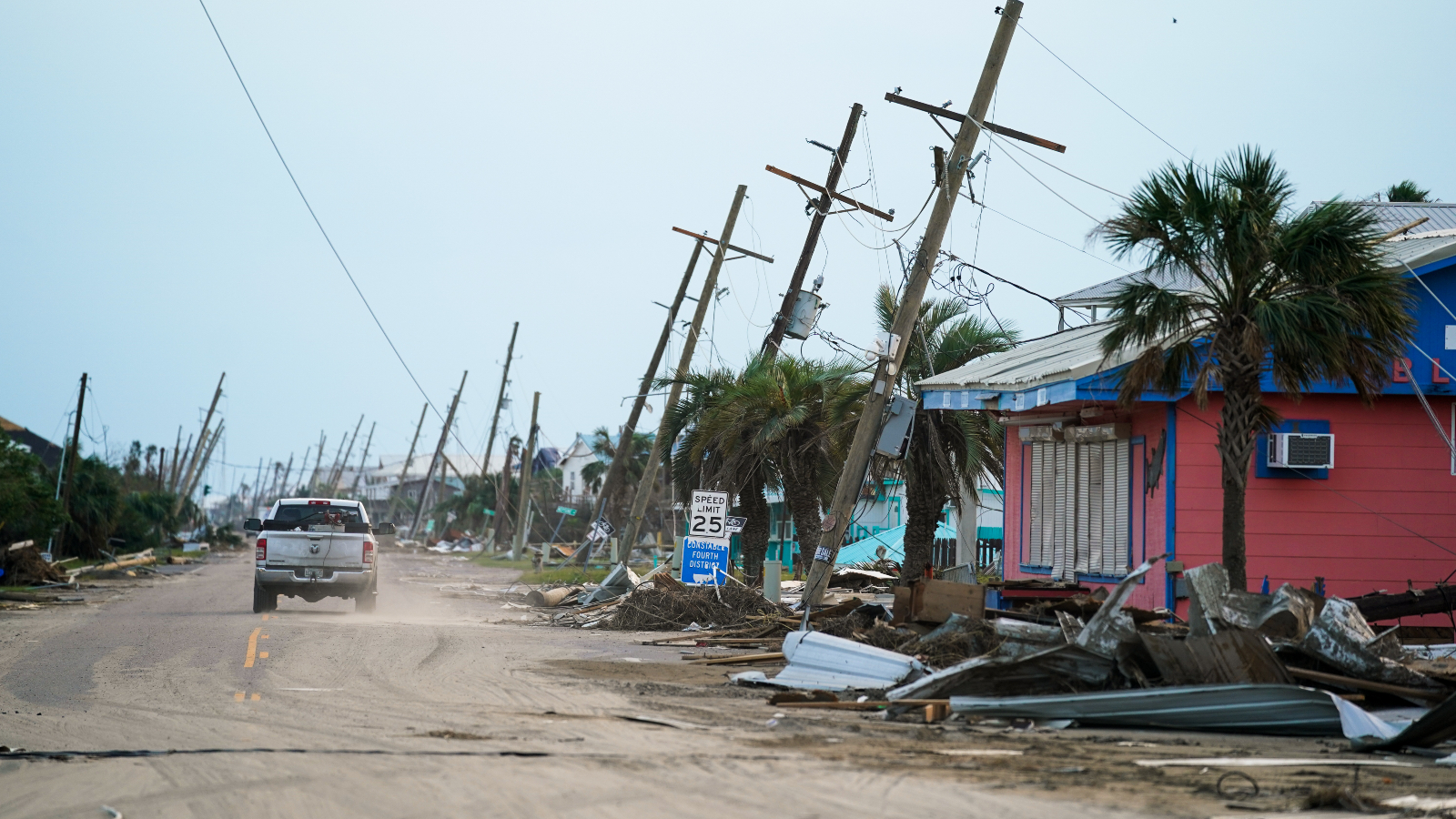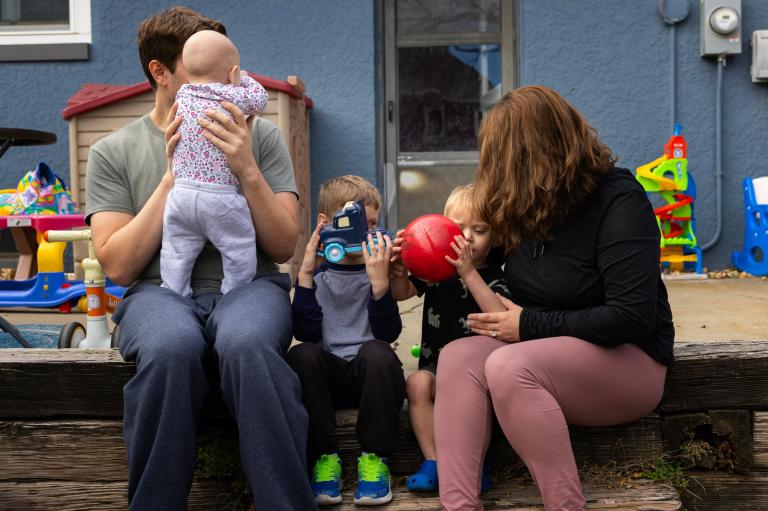Last week, Louisiana insurance commissioner Jim Donelon held a press conference to announce some very bad news.
A few months earlier, a major insurance company called Lighthouse had gone bankrupt, leaving almost 30,000 homeowners in the state without storm coverage. The company went under thanks to last year’s Hurricane Ida, which led to $400 million in damage claims, far more money than the company had on hand. It had been up to Donelon to find a new company to take over these abandoned policies, but no other company wanted them. In fact, other companies were fleeing the state en masse.
“Unfortunately, the unprecedented level of damage from Hurricane Ida broke the backs of [these] companies,” Donelon said at the press conference. “Right now, we are trying to stop the flow of companies exiting our state.”
As another hurricane season promises to bring extra-strong storms driven by high ocean temperatures, Louisiana’s insurance market is headed for a tailspin. The damage from Hurricane Ida caused at least seven private insurance companies to collapse or cancel their policies, and several more could be on their way out, with dire implications for the state’s housing market. The market collapse threatens to leave tens of thousands of homeowners uninsured during the most dangerous time of year. Following on the heels of upheaval in the fire and flood insurance markets, the turmoil in Louisiana is yet another glaring signal that property and insurance markets aren’t prepared to deal with the financial fallout of climate-driven disasters.
“There’s a lot of panic going on right now,” said Quan Huynh, an insurance agent with Allstate in the suburbs of New Orleans. “A lot of people really don’t have options.”
Damage from hurricanes falls into two broad categories. The first category is flood damage, which is covered by the government-run National Flood Insurance Program, or NFIP. The second category is everything else, from leaks caused by heavy rainfall to wind damage, which are covered under traditional homeowner’s insurance.
In the early twentieth century, private insurance companies stopped covering flood damage, in large part because they couldn’t turn a profit — the same homes were flooding over and over again, leading to huge claim payouts every time. In the late 1960s, Congress stepped in to create NFIP, a public insurance program that would offer universal flood coverage.
Private insurance companies still cover other kinds of hurricane damage, though, because those risks are lower: Floods happen over and over again in communities near the water, but an individual homeowner’s chances of getting hit by a whopper tropical storm are always going to be pretty low.
The geographic exception to this reliable rule of thumb is storm-battered Florida, where the insurance market collapsed after Hurricane Andrew in 1992. The claim payouts from the storm totaled around $30 billion, enough to cause seven insurance companies to fail and several more to consider leaving the state. The state legislature stepped in to stabilize the market, beefing up building codes and creating a state-run “insurer of last resort” that could provide coverage to risky customers.
Now, as Louisiana’s insurance industry reels from the effects of Hurricane Ida, the state seems to be headed for a similar crisis. Ida destroyed tens of thousands of homes from Baton Rouge to the New Orleans suburbs. The storm reached peak intensity thanks to extra-warm ocean temperatures in the Gulf of Mexico, and it maintained high speed even after making landfall in part thanks to the disappearance of Louisiana’s coastal wetlands.
As storm victims filed damage claims after the storm, the dominoes started to fall. Two insurance companies that covered around 30,000 customers in the state announced in early December of last year that they were unable to pay out all their claims from Ida. One of them, Access Home Insurance, had received more than $180 million in claims but only had $115 million in cash and assets available. A third insurer failed just days later, and another one collapsed a few months after that. Another folded earlier this month.
Even insurers that didn’t face financial ruin have moved to exit the state market, canceling all their policies rather than risk having to make an enormous payout this hurricane season. A dozen insurance companies in total have either failed or left the state over the past two years, according to the New Orleans Times-Picayune, disrupting coverage for at least 100,000 customers. At least two state lawmakers have lost their coverage, including one member of the state’s House Committee on Insurance.
“It’s very common now for companies to leave, considering we’ve been hit with multiple storms,” said Huynh. “That caused a lot of companies to reevaluate the business, and then once they saw a couple of companies going bankrupt, a couple other companies decided to pull out. The pool of risk is getting narrower and narrower.”
Huynh’s own company, Allstate, stopped including wind coverage in its homeowner’s policies years ago; he used to refer his clients to a partner carrier for wind coverage, but that company stopped issuing policies this year.
In theory, the state takes over failed insurance companies and holds them in receivership until another private company comes along to purchase the failed policies. That’s what happened to the first three companies that failed in December, all of which were snapped up by a company called SafePoint. Since then, though, the outlook for the insurance market has gotten darker: The state has been unable to find a buyer for one of the more recent failures, Lighthouse, which had more than 30,000 policies on its books. The company’s former customers and tens of thousands of other Louisianans are now on their own to find new insurance, with just months to go before the peak of hurricane season.
In the short term, Ida victims can probably count on getting their money eventually, even if their insurance companies fail. That’s because the state mandates that all private insurers contribute to a collective emergency fund that can cover claim payouts for failed companies. The payouts from the fund have a hard cap, though, which may not cover full repairs for everyone.
The bigger question is where Louisianans will buy insurance for the future. Like Florida, the state runs an insurer of last resort that offers coverage to people who can’t get it on the private market. The so-called Louisiana Citizens plan will provide a temporary solution to homeowners whose insurers have failed, but it may not stabilize the state market over the long term. For one thing, the coverage is expensive and comes with a hard cap on claim payouts. It also tends to attract the riskiest customers, which may jeopardize its own finances in the future. Huynh says that in many cases the premiums for Citizens are around double those for a plan on the private market.
If more big providers leave the state in the coming years, it could trigger a downward spiral in the housing market. Not only would Citizens struggle to stay afloat as more customers seek public-option coverage, but individual costs for homeowners on the private market would also soar as companies sought to maintain profit margins. That’s what’s happening in Florida right now as homeowners see double-digit premium increases this year ahead of storm season. Farther down the road, lenders might hesitate to write loans in areas where they know the insurance market is thin, which would make it more difficult for many buyers to secure mortgages.
The crisis in Louisiana is yet another example of how climate change is stressing the financial assumptions that undergird the U.S. real estate market. In California, for instance, private insurers have dropped thousands of insurance policies amid escalating wildfire risk, leaving homeowners and businesses alike scrambling for new coverage. In coastal areas, meanwhile, research has shown that lenders are more likely to securitize their flood-prone mortgages with the federal government, transferring climate-change-related risk off their individual balance sheets, and onto the public’s.
“At this point,” Huynh said of Louisiana’s insurance market, “it all depends on how this hurricane season unfolds. If we get hit with a hurricane this year, I do think it’s gonna implode.”




